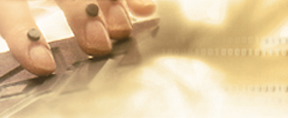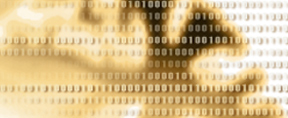16: Haptic object identification
Appelle S (1972) Perception and discrimination as a function of stimulus orientation: The “oblique effect” in man and animals. Psych Bull 78: 266-278
Appelle S (1991) Haptic perception of form. In: MA Heller, W Schiff (eds): The psychology of touch. Lawrence Erlbaum Associates, Hillsdale, NJ, 169-188
Ballesteros S, Manga D, Reales JM (1997) Haptic discrimination of bilateral symmetry in twodimensional and three-dimensional unfamiliar displays. Perc & Psych 59: 37-50
Ballesteros S, Millar S, Reales JM (1998) Symmetry in haptic and in visual shape perception. Perc & Psych 60: 389-404
Ballesteros S, Reales JM (2004) Visual and haptic discrimination of symmetry in unfamiliar displays extended in the z-axis. Perception 33: 315-327
Ballesteros S, Reales JM, García B, Ponce de León L (2006) Perceptual dimensions of haptic textures space by young and older adults. In: S Ballesteros (ed): Aging, cognition, and neuroscience. UNED, Madrid, Spain, 127-147
Ballesteros S, Reales JM, Ponce de León L, García B (2005) The perception of ecological textures by touch: Does the perceptual space change under bimodal visual and haptic exploration. WorldHaptics Proceedings (WHC’05) Pisa. IEEE Computer Society, Los Alamitos, CA, 635-638
Bensmaïa SJ, Hollins M (2005) Pacinian representations of fine surface texture. Perc & Psych 67: 842-854
Bensmaïa SJ, Hollins M, Yau J (2005) Vibrotactile information in the Pacinian system: a psychophysical model. Perc & Psych 67: 828-841
Carello C, Turvey MT (2000) Rotational invariants and dynamic touch. In: MA Heller (ed): Touch, representation and blindness. Oxford University Press, Oxford, UK, 27-66
Critchley M (1953) The parietal lobes. Hafner, New York
Davidson PW (1972) Haptic judgments of curvature by blind and sighted human. J Exp Psych 9: 43-55
Ellis RR, Lederman SJ (1993) The role of haptic versus visual volume cues in the size-weight illusion. Perc & Psych 53: 315-324
Ellis RR, Lederman SJ (1998) The golf-ball illusion: Evidence for top-down processing in weight perception. Perception 27: 193-201
Faineteau H, Gentaz E, Viviani P (2005) Factors affecting the size of the detour effect in the kinesthetic perception of Euclidean distance. Exp Brain Res 163: 503-514
Gibson JJ (1933) Adaptation, after-effect and contrast in the perception of curved lines. J Exp Psych 16: 1-31
Gibson JJ (1962) Observations on active touch. Psych Rev 69: 477-491
Gibson JJ (1966) The senses considered as perceptual systems. Houghton-Mifflin, Boston
Goldstone R (1994) An efficient method for obtaining similarity data. Behavior Research Methods, Instruments, & Computers 26: 381-386
Graziano MSA, Gross CG, Taylor CSR, Moore T (2004) A system of multimodal areas in the primate brain. In: C Spence, J Driver (eds): Crossmodal space and crossmodal attention. Oxford University Press, Oxford, UK 51-67
Heller MA (1982) Visual and tactual texture perception: Intersensory cooperation. Perc & Psych 31: 339-344
Heller MA (1984) Active and passive touch: The influence of exploration time on form recognition. J Gen Psych 110: 243-249
Heller MA (1987) Improving the passive tactile digit span. Bull Psych Soc 25: 257-258
Heller MA (1989) Picture and pattern perception in the sighted and blind: The advantage of the late blind. Perception 18: 379-389
Heller MA (1989) Texture perception in sighted and blind observers. Perc & Psych 45: 49-54
Heller MA (2000) Conclusions: The San Marino discussion. In: MA Heller (ed): Touch, representation and blindness. Oxford University Press, Oxford, UK, 183-214
Heller MA (2006) Picture perception and spatial cognition in visually impaired people. In: S Ballesteros, MA Heller (eds): Touch and blindness: Psychology and neuroscience. Lawrence Erlbaum Associates, Mahwah, New Jersey, 49-71
Heller MA, Ballesteros S (2006) Introduction: Approaches to touch and blindness. In: MA Heller, S Ballesteros (eds): Touch and Blindness: Psychology and Neuroscience. Lawrence Erlbaum Associates, Hillsdale, NJ, 1-24
Heller MA, Brackett DD, Salik SS, Scroggs E, Green S (2003) Objects, raised-lines and the haptic horizontal- vertical Illusion. Quarterly J Exp Psych A: 56: 891-907
Heller MA, Brackett DD, Scroggs E (2002) Tangible picture matching in people who are visually impaired. J Visual Imp and Blindness 96: 349-353
Heller MA, Brackett DD, Scroggs E, Steffen H, Heatherly K, Salik S (2002) Tangible pictures: Viewpoint effects and linear perspective in visually impaired people. Perception 31: 747-769
Heller MA, Calcaterra J, Green S, Lima F (1999) The effect of orientation on braille recognition in persons who are sighted and blind. J Visual Impairment and Blindness 93: 416-419
Heller MA, Calcaterra JA, Burson LL, Tyler LA (1996) Tactual picture identification by blind and sighted people: Effects of providing categorical information. Perc & Psych 58: 310-323
Heller MA, Calcaterra JA, Green SL, Brown L (1999) Intersensory conflict between vision and touch: The response modality dominates when precise, attention-riveting judgments are required. Perc & Psych 61: 1384-1398
Heller MA, Calcaterra JA, Tyler LA, Burson LL (1996) Production and interpretation of perspective drawings by blind and sighted people. Perception 25: 321-334
Heller MA, Hasselbring K, Wilson K, Shanley M, Yoneyama K (2004) Haptic illusions in the sighted and blind. In: S Ballesteros, MA Heller (eds): Touch, blindness and neuroscience. UNED Press, Madrid, Spain, 135-144
Heller MA, Kappers AML, McCarthy M, Clark A, Riddle T, Fulkerson E, Wemple L (submitted) The effects of curvature on haptic judgments of extent in sighted and blind people.
Heller MA, Kennedy JM, Clark A, McCarthy M, Borgert A, Fulkerson E, Wemple LA, Kaffel, N, Duncan A, Riddle T (2006) Viewpoint and orientation influence picture recognition in the blind. Perception 35: 1397-1420
Heller MA, Myers DS (1983) Active and passive tactual recognition of form. J Gen Psych 108: 225-229
Heller MA, Rogers GJ, Perry CL (1990) Tactile pattern recognition with the Optacon: Superior performance with active touch and the left hand. Neuropsychologia 28: 1003-1006
Henriques DY, Soechting JF (2003) Bias and sensitivity in the haptic perception of geometry. Exp Brain Res 150: 95-108
Hollins M, Bensmaïa S, Karlof K, Young F (2000) Individual differences in perceptual space for tactile textures: Evidence from multidimensional scaling. Perc & Psych 62: 1534-1544
Hollins M, Bensmaïa SJ, Washburn S (2001) Vibrotactile adaptation impairs discrimination of fine, but not coarse, textures. Somatosensory & Motor Research 18: 253-262
Hollins M, Faldowsky R, Rao S, Young F (1993) Perceptual dimensions of tactile surface texture: A multidimensional scaling analysis. Perc & Psych 54: 697-705
Jansson G, Monaci L (2004) Haptic identification of objects with different numbers of fingers. In: S Ballesteros, MA Heller (eds): Touch, blindness and neuroscience. UNED Press, Madrid, Spain, 209-219
Johnson KO (2004) Neural mechanisms of tactile sensation. In: S Ballesteros, MA Heller (eds): Touch, Blindness, and Neuroscience. UNED, Madrid, Spain, 37-38
Johnson KO, Hsiao SS (1992) Neural mechanisms of tactual form and texture perception. Ann Rev Neurosc 15: 227-250
Jones LA, Lederman SJ (2006) Human hand function. Oxford University Press, New York
Julesz B (1971) Foundations of cyclopean perception. University of Chicago Press, Chicago
Kappers AML, Koenderink JJ, Lichtenegger I (1994) Haptic identification of curved surfaces. Perc & Psych 56: 53-61
Katz D (1925/1989) The world of touch (LE Krueger Trans.). Erlbaum, Hillsdale, NJ (Original published in 1925)
Kawai S (2002) Heaviness perception. I. Constant involvement of haptically perceived size in weight discrimination. Exp Brain Res 147: 16-22
Kawai S (2002) Heaviness perception. II. Contributions of object weight, haptic size, and density to the accurate perception of heaviness or lightness. Exp Brain Res 147: 23-28
Kennett S, Taylor-Clarke M, Haggard P (2001) Noninformative vision improves the spatial resolution of touch. Curr Biol 11: 1188-1191
Klatzky RL, Lederman SJ (2003) The haptic identification of everyday life objects. In: Y Hatwell, A Streri, E Gentaz (eds): Touching for knowing: Cognitive psychology of haptic manual perception. Benjamins, Amsterdam, 105-121
Klatzky RL, Lederman SJ, Metzger V (1985) Identifying objects by touch: An expert system. Perc & Psych 37: 299-302
Klatzky RL, Lederman SJ, Reed C (1987) There’s more to touch than meets the eye: Relative salience of object dimensions for touch with and without vision. J Exp Psych: General 116: 356-369
LaMotte RH (2000) Softness discrimination with a tool. J Neurophysiol 83: 1777-1786
Lederman SJ, Klatzky RL (1987) Hand-movements: A window into haptic object recognition. Cog Psych 19: 342-368
Lederman SJ, Klatzky RL (1990) Haptic classification of common objects: Knowledge-driven exploration. Cog Psych 22: 421-459
Lederman SJ, Klatzky RL, Chataway C, Summers C (1990) Visual mediation and the haptic recognition of two-dimensional pictures of common objects. Perc & Psych 47: 54-64
Locher PJ, Nodine C (1973) Influence of stimulus symmetry on visual scanning patterns. Perc & Psych 13: 408-412
Locher PJ, Simmons RW (1978) Influence of stimulus symmetry and complexity upon haptic scanning strategies during detection, learning, and recognition tasks. Perc & Psych 23: 110-116
Louw S, Kappers AML, Koenderink JJ (2000) Haptic detection thresholds of Gaussian profiles over the whole range of spatial scales. Exp Brain Res 132: 369-374
Michaels CF, Weier Z, Harrison SJ (2007) Using vision and dynamic touch to perceive the affordances of tools. Perception 36: 750-772
Millar S (1978) Aspects of memory for information from touch and movement. In: G Gordon (ed): Active touch: The mechanism of recognition of objects by manipulation. A multidisciplinary approach. Pergamon Press, Oxford, 215-227
Millar S (2006) Processing spatial information from touch and movement: Implications from and for neuroscience. In: MA Heller, S Ballesteros (eds): Touch and blindness: psychology and neuroscience. Lawrence Erlbaum Associates, Mahwah, NJ, 25-48
Palmer SE (1989) Reference frames in the perception of shape and orientation. In: BS Shepp, S Ballesteros (eds): Object perception: Structure and processes. Lawrence Erlbaum Associates, Hillsdale, NJ, 121-163
Pascual-Leone A, Theoret H, Merabet L, Kauffmann T, Schlaug G (2006) The role of visual cortex in tactile processing: A metamodal brain. In: MA Heller, S Ballesteros (eds): Touch and blindness: Psychology and Neuroscience. Lawrence Erlbaum Associates, Mahwah, NJ, 171-195
Picard D, Dacremont C, Valintin D, Giboreau A (2003) Perceptual dimensions of tactile textures. Acta Psychologica 114: 165-184
Simmons RW, Locher PJ (1979) The role of extended perceptual experience upon haptic perception of non-representational shapes. Perc & Psych 48: 987-991
Srinivasan MA, LaMotte RH (1995) Tactual discrimination of softness. J Neurophysiol 73: 88-101
Symmons MA, Richardson BL, Wuillemin DB (2004) Active versus passive touch: Superiority depends more on the task than the mode. In: S Ballesteros, MA Heller (eds): Touch, Blindness and Neuroscience. UNED, Madrid, Spain, 179-185
Vogels I (1996) Haptic after-effect of curved surfaces. Perception 25: 109-119
Wagemans J (1995) Detection of visual symmetries. Spatial Vision 9: 9-32





